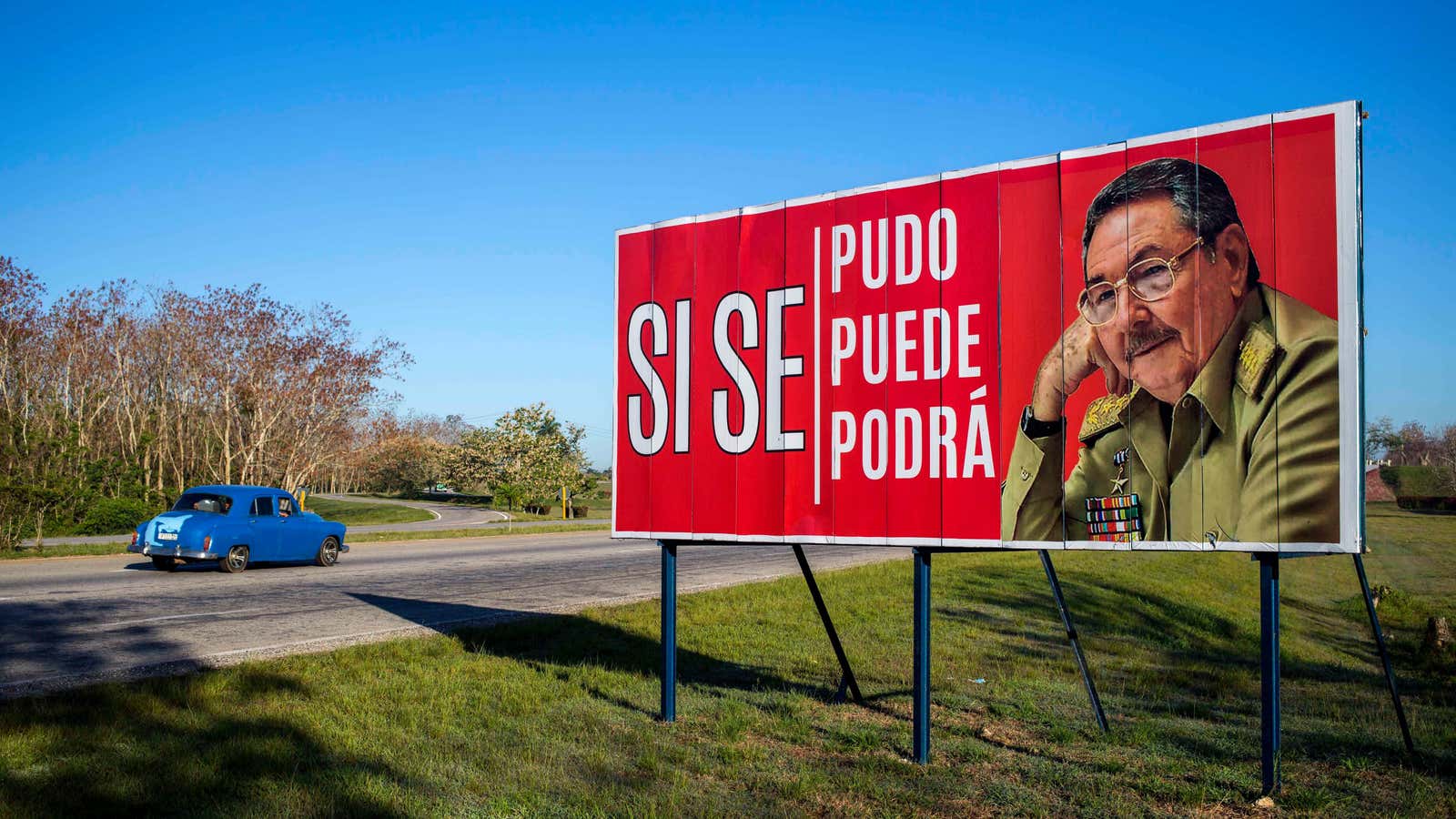Cuba just got a new president. In a momentous change for the island, for the first time in nearly 60 years, its leader’s last name isn’t Castro.
The National Assembly on Thursday confirmed the only candidate for the post, Miguel Díaz-Canel, the country’s first vice president and a Communist Party loyalist. He replaces Raúl Castro, who took over the country’s leadership from his brother Fidel in 2006.
In another big departure from the past, Díaz-Canel is also be the first president since the Cuban Revolution to not have fought in the revolt. (He was born in 1960, one year after a triumphant Fidel Castro marched into Havana after toppling dictator Fulgencio Batista.)
Still, in many ways, Cuba’s presidential transition is far from revolutionary. It’s part of the periodic updating the Castro brothers have carried out to maintain Cuba’s socialist regime, whether it be by opening up the economy or dialing back state repression. Like his predecessors, Cuba’s new president will have to rejigger the definition of the Castro revolution to handle the island’s economic and political reality—currently in a precarious state.
The big difference now is that Díaz-Canel will have to perform that tricky balance without the sway of the Castro brand.
Within the revolution
Fidel Castro famously said: “Within the Revolution, everything; outside of it, nothing.” But what fits within the definition of the revolution has changed dramatically over time. Cuba’s economic policy is a case in point. The island’s government has gone from expropriating private businesses to allowing them to proliferate—all in the name of “the Revolution.”
Until he officially stepped down in 2008, Fidel was the arbiter of what that revolution looked like. As its architect and “supreme chief,” he had both the moral authority and power to redefine it. “When Fidel said ‘this is what we’re going to do’ everybody made it happen,” said Michael Bustamante, a history professor at Florida International University.
Raúl has the same kind of credibility, both within the government and with Cuban people. He, too, was part of the Revolution’s armed beginnings—a fact channeled through the olive-green fatigues he still wears. That helped him speed up the economic transformation started by his brother in the 1990s, after the collapse of the Soviet Union. During his tenure, Raúl broadened the private sector, opened up the real estate market, and let Cubans to travel abroad.
“Because it was a Castro who was introducing these reforms, there was a lot more willingness to implement them,” said Alana Tummino, head of the Cuba working group at Americas Society/Council of the Americas.
Cuba transition
Díaz-Canel will have to work hard to wield that kind of influence. He will have to rule by compromise and consensus, a task made all the more difficult given the challenges Cuba faces.
The latest iteration of the revolution, as shaped by Raúl, is still in dire need of revision, observers point out. It remains hobbled by its two-currency system—one for locals, another pegged to the dollar for tourists and international business—that stalls economic growth. Cuba must also deal with the collapse of Venezuela, which it relied upon for cheap oil.
Cuba’s new president will have to tackle those problems without the help of the US. Relations between the two countries, which became friendlier during the Barack Obama administration, have grown cold again under Donald Trump.
To be sure, Díaz-Canel has buy-in from the establishment, including Raúl Castro. After rising through the ranks of the Communist Party, he was tapped by the younger Castro as the island’s first vice president in 2013. Not much is known about what kind of leader he will make, but in a video leaked last year, he vowed to censure independent media outlets that are critical of the government.
The government apparatus has been promoting the transition with the hashtag #somoscontinuidad—we are continuity. Although he’s stepping down as president, Raúl will remain in the influential position of secretary of Cuba’s Communist Party.
So experts are not expecting any sudden changes under Díaz-Canel. Still, over time, the new president will have to continue the Castro tradition of adjusting the concept of the revolution if he wants it to survive.
This story has been updated with the confirmation of Miguel Díaz-Canel on Thursday.
